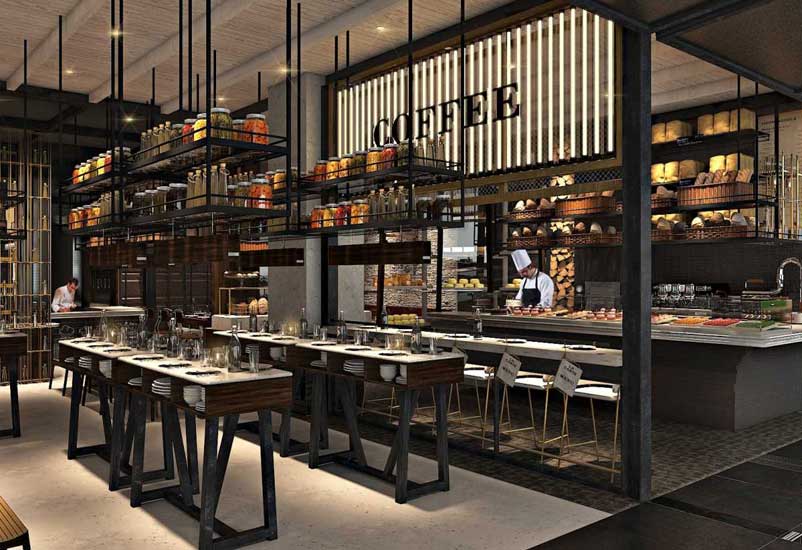 A trend in kitchen layout in recent years has been the increased use of open kitchens, allowing restaurant guests to see the chefs at work.
A trend in kitchen layout in recent years has been the increased use of open kitchens, allowing restaurant guests to see the chefs at work.
Much attention and debate is given to the arrival and eventual decline of culinary trends, in regards to menus, concepts, and front of house design. Yet the design of the kitchens and choice of equipment is almost equally affected by changes in consumer taste.
While there most certainly is such a thing as back-of-house design trends, they are also largely intrinsically linked to the trends consumers can see from their point of view in the dining room.
One of the most obvious trends in kitchen layout in recent years has been the increased use of open kitchens and similar design devices (if not fully open) that allow restaurant guests to see the chefs at work.
Chef opinions differ wildly on the trend, some considering it an invaluable exercise in interaction with guests, others considering it an unwelcome intrusion.
Designers who have worked in the Middle East also differ in opinion as to how far this trend has already run its course.

| Advertisement |
Speaking to Caterer Middle East ahead of Rüya’s launch, Tina Norden, designer and project director at Conran and Partners, who was tasked with the design of the new Anatolian restaurant at Grosvenor House Dubai, told us that from her perception, the open kitchen trend “has not yet reached its peak”.
“Restaurants, particularly upmarket restaurants, used to be quite harsh — white table clothes, quiet, an elegant, upmarket atmosphere. I think people are beyond that, they find it boring, and quite stifling,” Norden shared.
“Obviously, the minute you have an open kitchen — with that level of noise and energy — immediately it gives that liveliness to the space. I think it is due to people being interested in where their food is coming from, and wanting to see it being cooked. Chefs are superstars these days. All of that means people love open kitchens,” she added.
In contrast, Ryan Gazder, director of HCTS International Hospitality & Foodservice Consultants, told Caterer he is inclined to disagree: “There’s way too many of them. These days everyone thinks its de rigeur, but an open kitchen may not necessarily be the best solution for all restaurants.”
“Theatrics, interactivity and showmanship definitely do work in certain types of restaurant and cannot work in others. This is where a good concept creator and a good chef need to work hand-in-hand with stakeholders to ensure that the outlet delivers on their promise and vision, while ensuring that the brand identity and service concept are not affected by the live cooking (or the lack of it),” Gazder continued.
Article continues on the next page








 Search our database of more than 2,700 industry companies
Search our database of more than 2,700 industry companies









